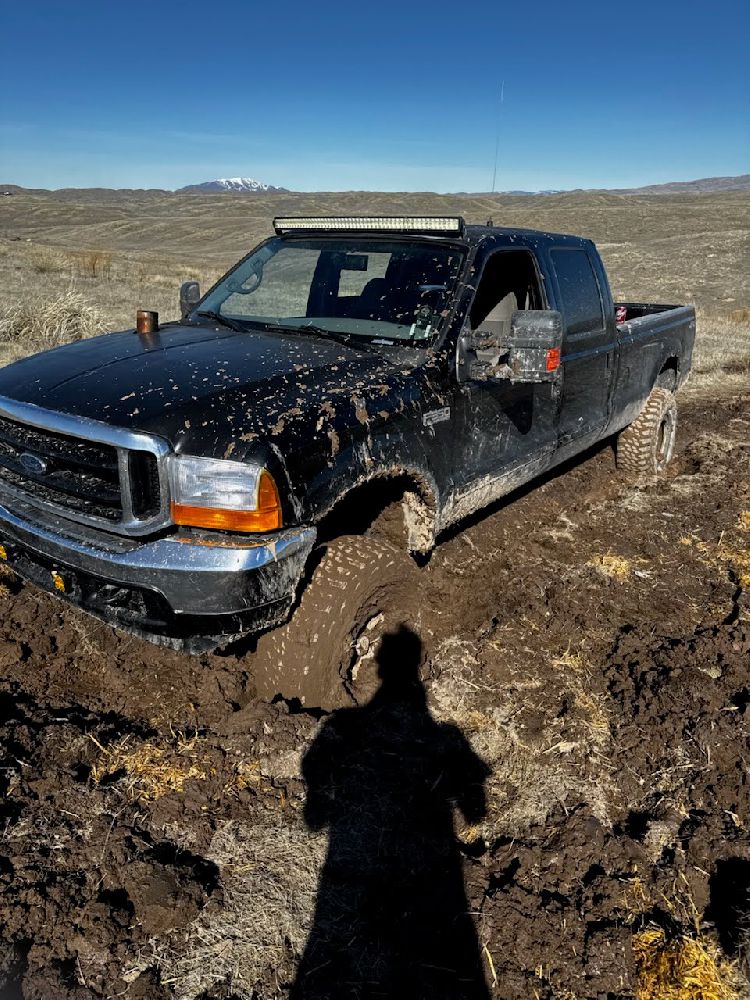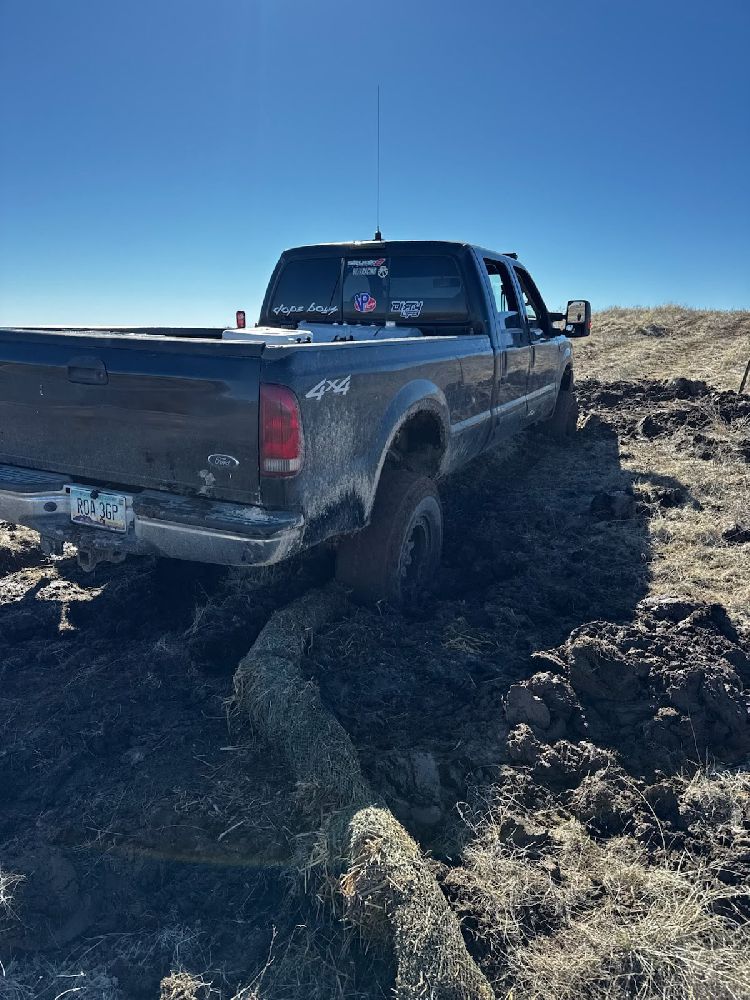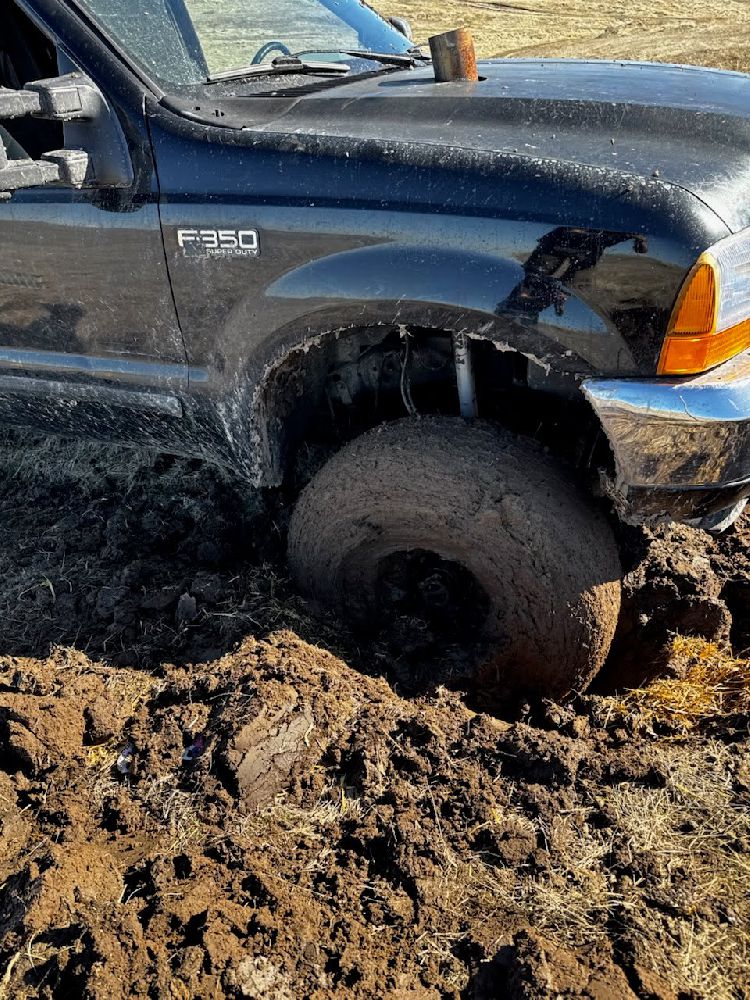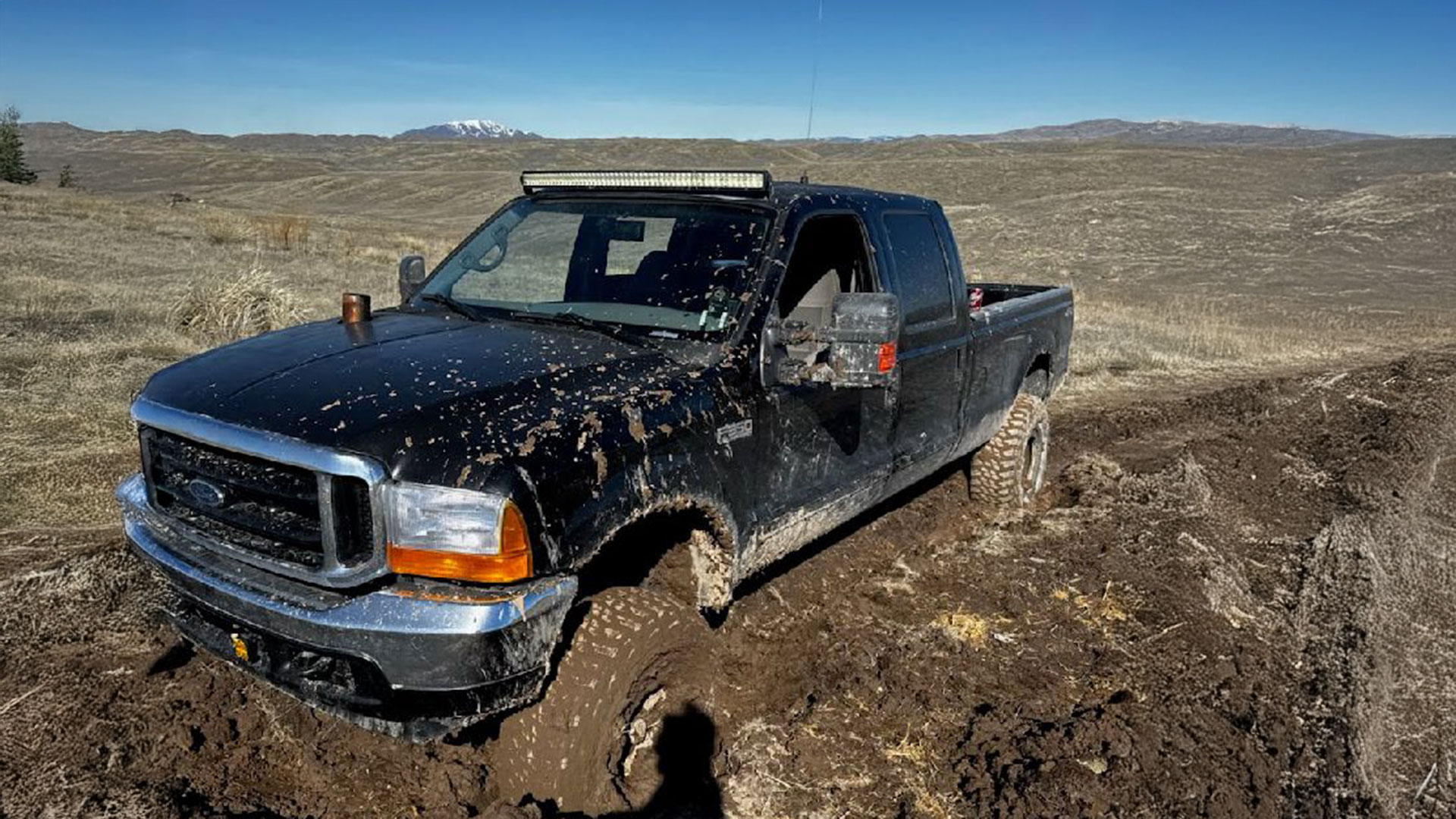Thursday, February 27th, 2025, at 3:32 p.m. (MT), we received a request for help with an offroad recovery in Idaho. The requester, Ryder Legan, submitted the following information: “4×4 01 f350 7.3 stuck in mud 60ish feet from the road highway 16 in star Idaho / I’m with the vehicle”
Our administrator, Al Fontan, contacted the requester and verified the contact information provided, GPS location, and current situation before sending the request to local volunteers. In this particular recovery, we contacted volunteers within a 10-mile radius.
From the group of contacted volunteers we had Douglas Crowell and Mike Haviland, teaming up and taking over the recovery. There were two trucks to be recovered. Both volunteers were about an hour out.



Mike told us later that the ground was dry clay on top and creamy soup underneath. During the recovery, they had a tough time staying on top of it. Mike said, “It was dry clay on top of soup, and the big diesel sank. I drove a different line on the hill he was on, got him out of the big hole, and then tried to drive back up.”
By 6:00 p.m., they got everybody out.
We didn’t get much more info from the volunteers. We just wanted to thank Mike and Douglas for making it look so easy! You guys are awesome, saved the day in this offroad recovery in Idaho.
If you would like to receive a text message when we get a request near you, create your account here: offroadportal.org/signup
The Hidden Danger Beneath: Driving Heavy Trucks Over Compromised Clay Surfaces
At first glance, a clay hard-top surface can look deceptively solid — a seemingly reliable path for heavy trucks hauling loads across construction sites, rural roads, or industrial yards. But anyone who has spent time behind the wheel of a fully loaded rig knows that appearances can be dangerously misleading, especially when that clay crust hides a soft, saturated layer underneath.
As a heavy truck rolls across a brittle clay surface, everything seems fine — until it isn’t. The weight of the truck applies massive pressure to the ground below. If the clay cap is thin or already stressed by weather or previous traffic, it doesn’t take much for the surface to crack and collapse. The moment that happens, the tires break through and meet the real enemy: a mushy, waterlogged clay base with almost no structural strength.
The transition is sudden and unforgiving. With the support gone, the tires begin to sink. Traction disappears almost instantly as the soft clay gives way under the truck’s weight, offering little resistance and even less grip. Drivers might first notice a sluggish response, a faint fishtailing motion, or the ominous feeling of the truck bogging down. Hitting the accelerator often makes things worse, causing the tires to spin helplessly and dig the truck even deeper into the mire.
Beyond the obvious danger of getting stuck, the situation puts enormous strain on the truck itself. Engines, transmissions, and differentials are pushed to their limits trying to fight through the drag of soft, sticky clay. Suspensions take a beating as tires drop unevenly into hidden ruts, and recovery — if it becomes necessary — can be expensive, time-consuming, and sometimes risky.
There’s also a bigger picture: every pass over a compromised surface damages it further. What was once a solid path can quickly degrade into a network of deep ruts and soft spots, making it even harder for the next vehicle to pass. If not addressed, the area can become completely impassable, disrupting work and creating significant safety hazards for anyone trying to navigate through.
Driving a heavy truck over a clay surface with a weak bottom is a gamble — and not a good one. Without proper ground preparation or careful weight management, it’s only a matter of time before that thin hard top gives way, leaving a stranded truck and a major headache behind.




